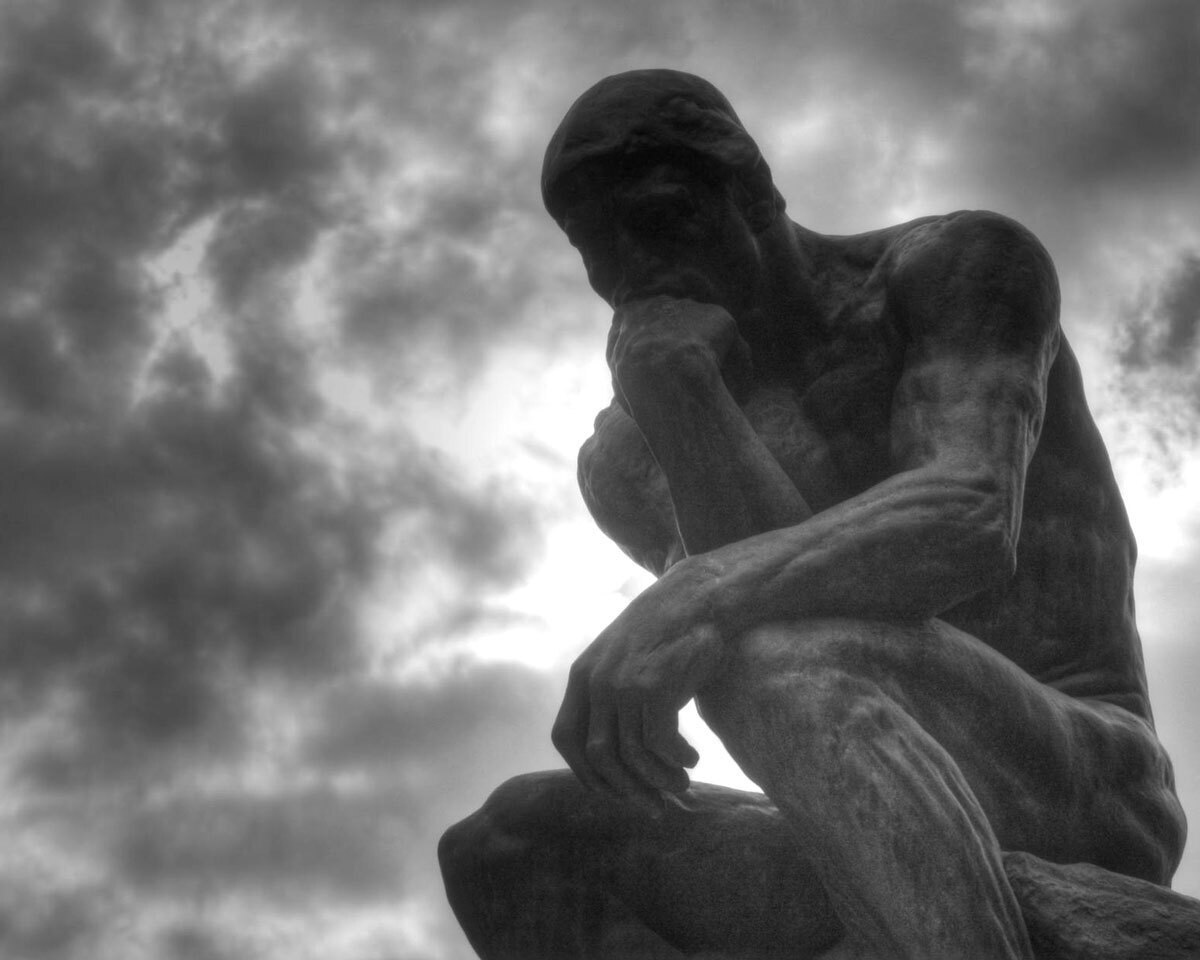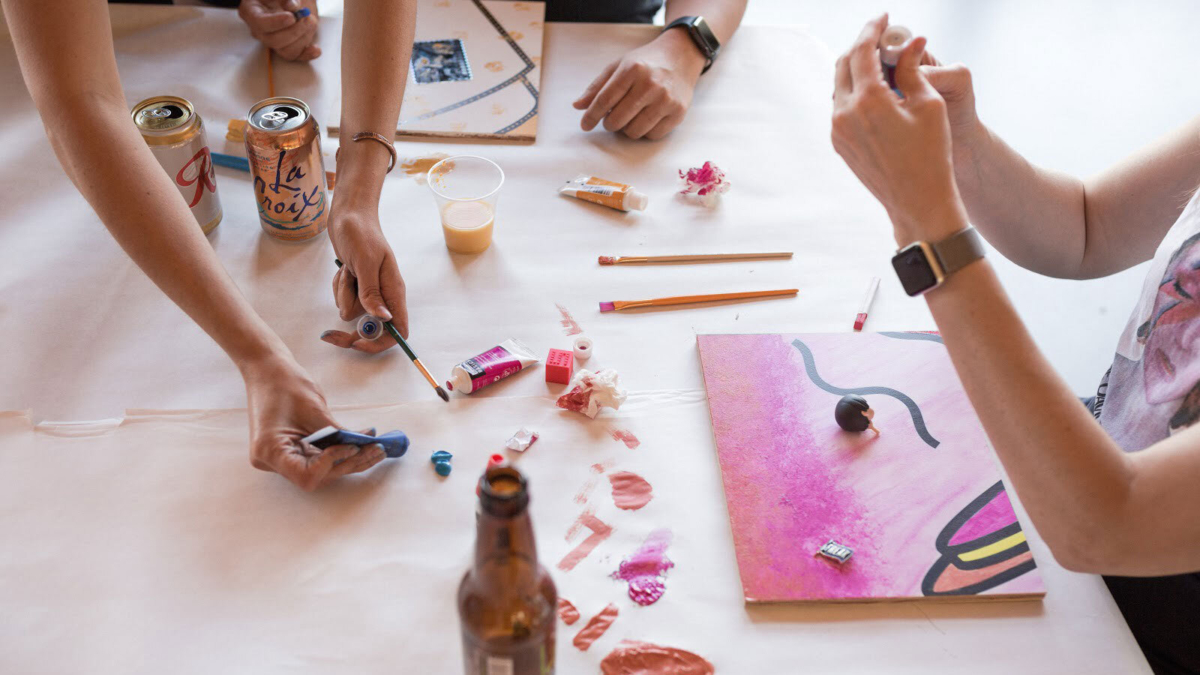
Culture
Becoming Better Technology Creators
Erika Ramberg shares Substantial’s creative experiment in partnership with Electric Coffin.
Author
Erika Ramberg
Photographer
Danielle Elliott
We are technologists. At Substantial, we imagine, build and design mobile and web apps. We collaborate on connected devices, consult on digital product strategy and build our own digital products.
We are also creators. Creators who spend a considerable amount of time on screens each day. It’s hard not to wonder — as technology creators, is this our reality? Is the screen the new artistic medium? Is this a future that all creatives should be prepared to accept?
Or (and this was the hypothesis shared by my CEO Carey Jenkins and myself) — would stepping away from technology provide fresh inspiration for how we vision, collaborate and build digital products?
At Substantial we ask ourselves regularly — what is the impact or our work? Are we helping to build a brighter digital future? Is there such a thing at all?
To test our questions, we decided to go totally analog. We invited Electric Coffin, a Seattle-based artist collective to our studio to facilitate an art workshop we lovingly dubbed ‘Art-a-thon.’ The rules? No phones, no screens (well, except for a handful of remote folks dialing in from SF, the UK, SLC and Chile), and instead an afternoon devoted to hands on work painting and collaborating together.
How would this time away from our daily digital routines land with the team? Would it feel like hours lost? Or could this experience actually be an opportunity to make us better at what we do? Could it wake up some new ways of thinking creatively that we could bring back to our work?
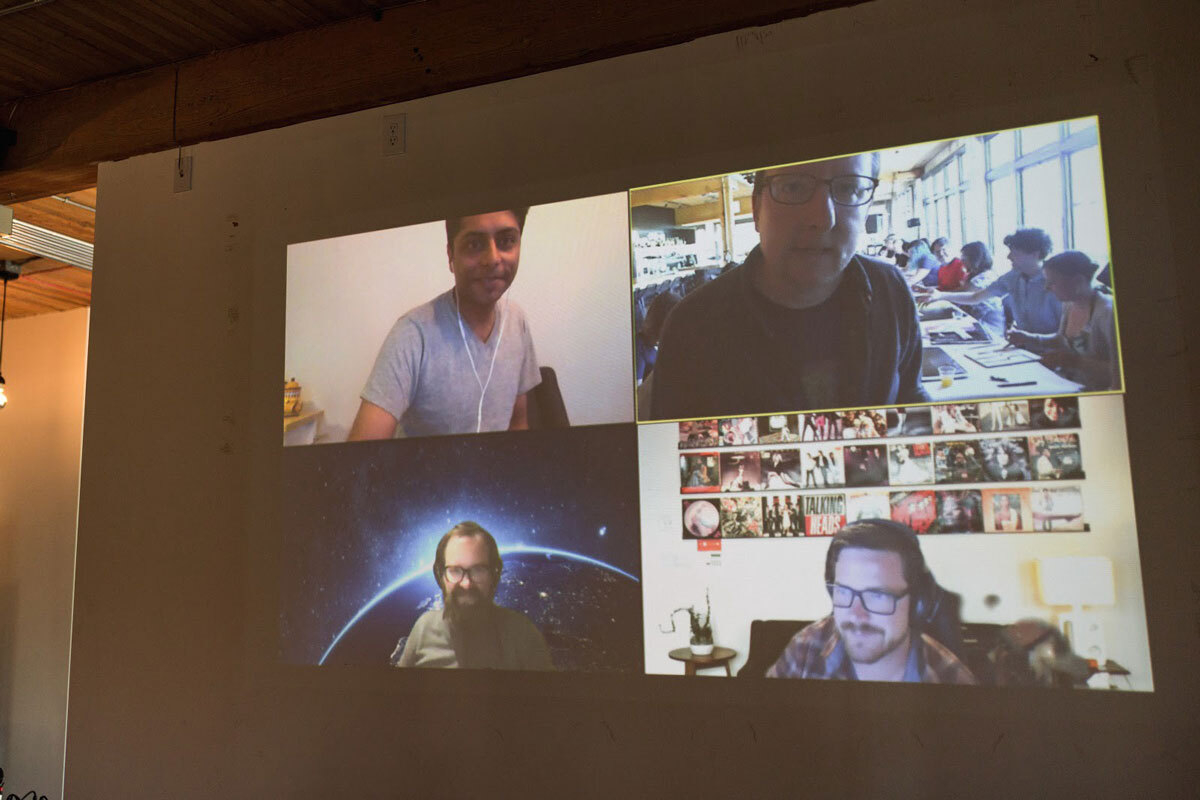
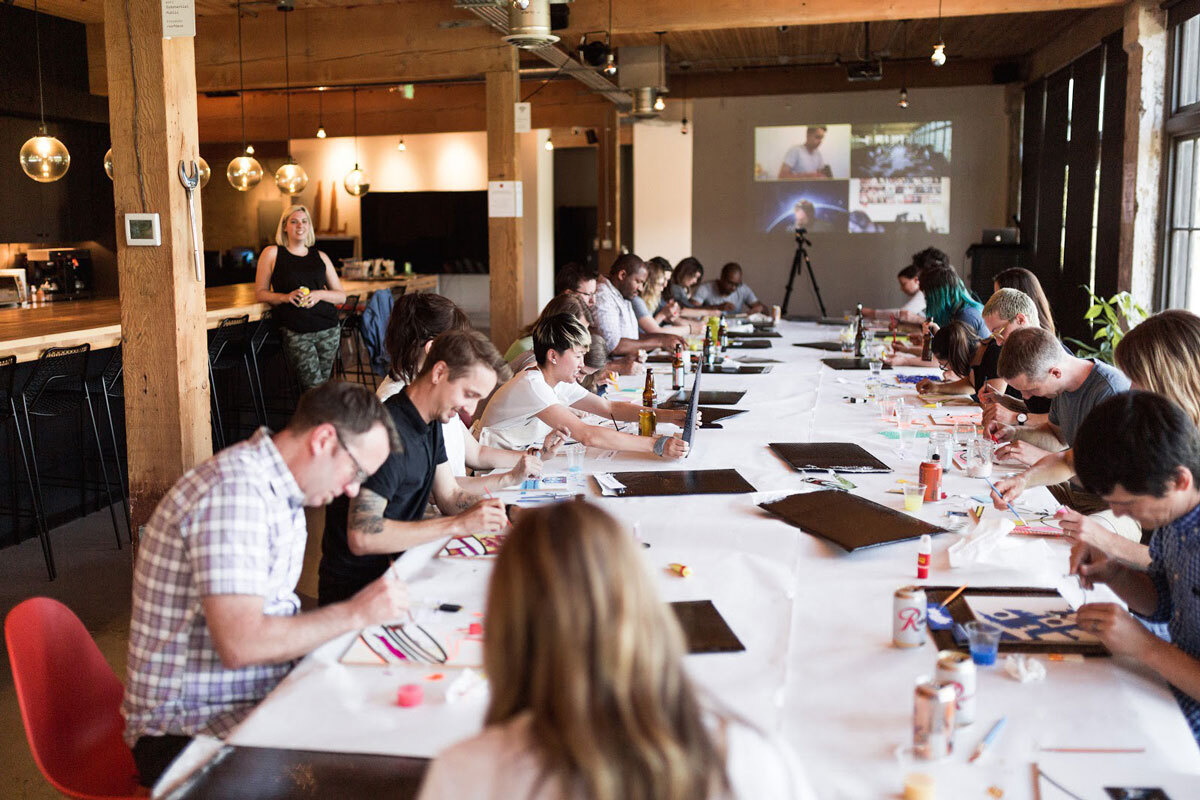
Electric Coffin spun up the idea of incorporating Substantial’s core values into the structure of Art-a-thon. Each team member received a package (even folks in South America and Europe). In it was a canvas with abstract demarcations, paint tubes and brushes, and one of Substantial’s five company values. The value inside your package was to lend inspiration to your experience of bringing your canvas to life.
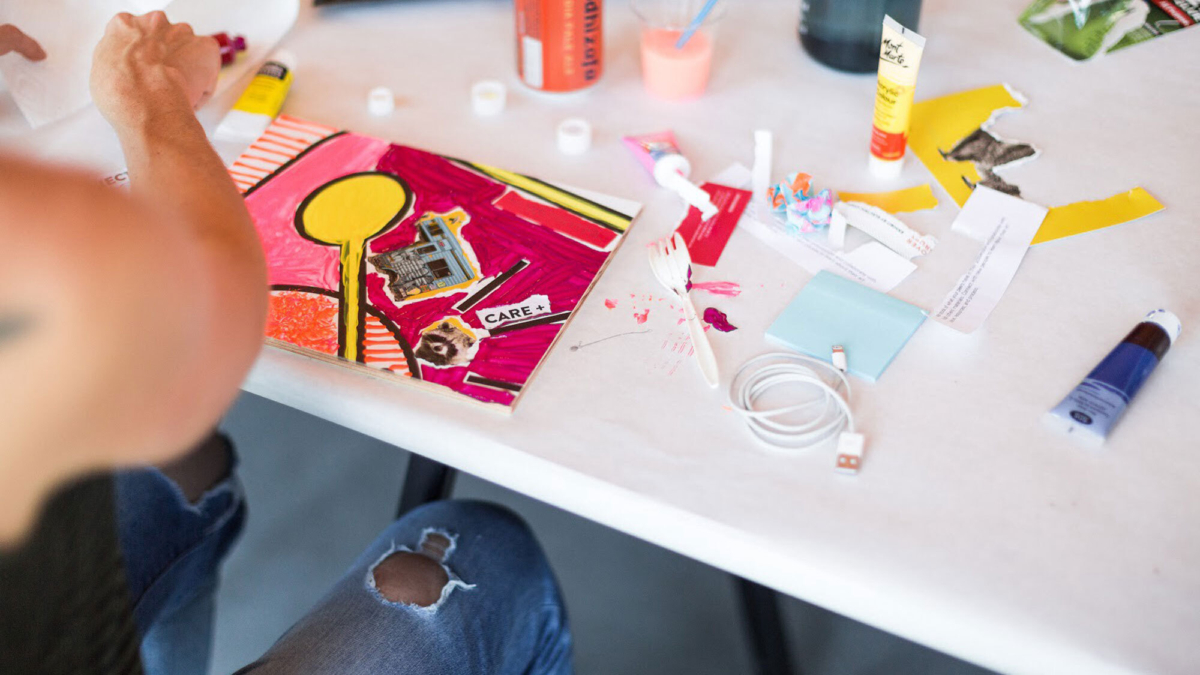
“We understand that as artists we have the opportunity to think outside of the box on a regular basis . . . to help others think this way, even just for a day and see how it can apply to their daily work life is really rewarding. ”Duffy De Armas / Electric Coffin
While people were creating, they weren’t yet aware that their piece was just one tile in a much larger composition. It was all connected. This is an apt metaphor for the digital products we build — each individual contribution affects the whole. As technology creators, nothing we do stands in isolation. Everything has a ripple effect and we must remain conscious of this fact as we make creative decisions.
So . . . how did Art-a-thon land with the team?
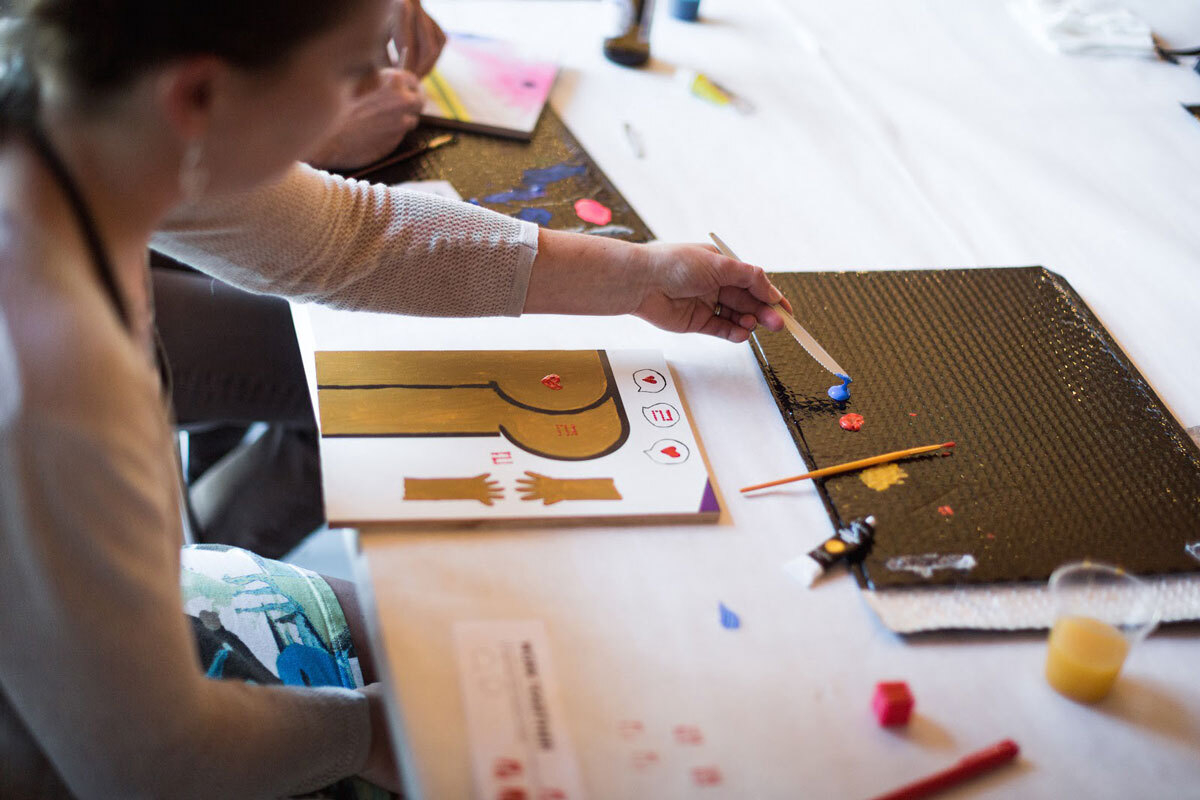
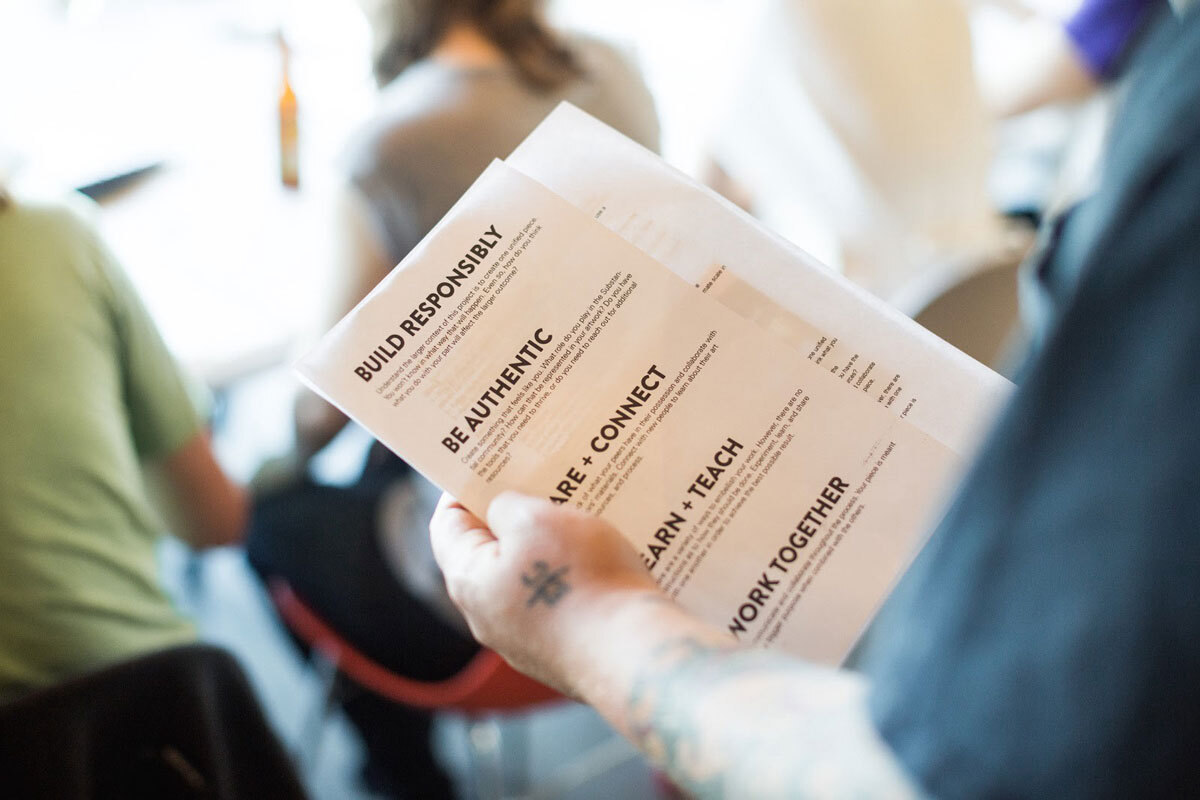
“When doing software development, it is easy to start over and try again if something isn’t working. With the Art-a-thon, I only had one canvas and no way to hit backspace to try again. I needed a plan of what I wanted to create, and I tried out the materials for my painting before putting them on the canvas.Cassie Koomjian : Lead Software Developer / Substantial
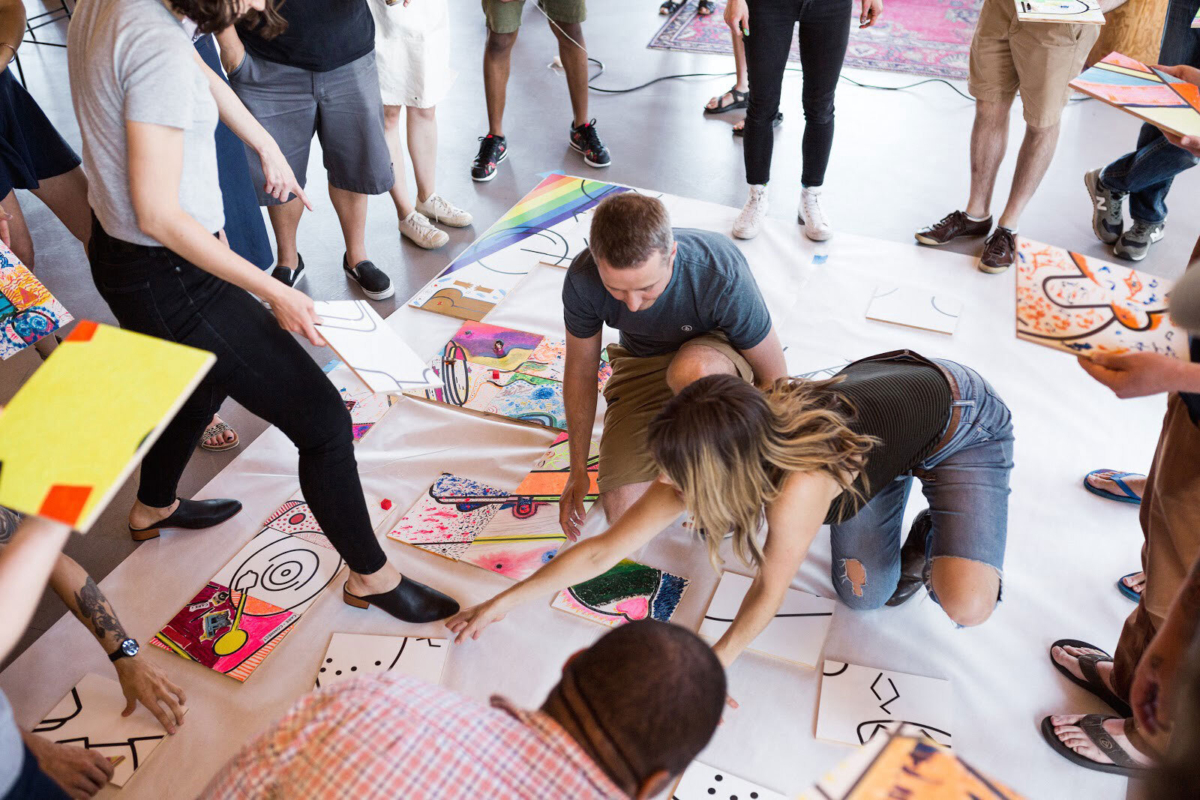
In software development we run experiments to test and validate ideas. Art-a-thon was an experiment too. We wanted to know — how would stepping away from our desks, our screens, and projects fold back into the work that we do?
So . . . how did it go? What conclusions were drawn?:
- When we can incorporate a sense of play in our work, we’re more engaged and passionate.
- In software development, we have the ability via agile development and rapid iteration to change course if need be. This is an invitation to be imaginative and to try new things. If they don’t work, we can iterate again.
- Software (like art) requires a problem-solving mentality. Constraints provide the opportunity to think in unconventional and creative ways.
- While work in front of screens can be creative, taking breaks, going for walks, being in nature, engaging in analog methods of creativity, and face to face interaction with a colleague can breathe big breaths of fresh air into our digital work.
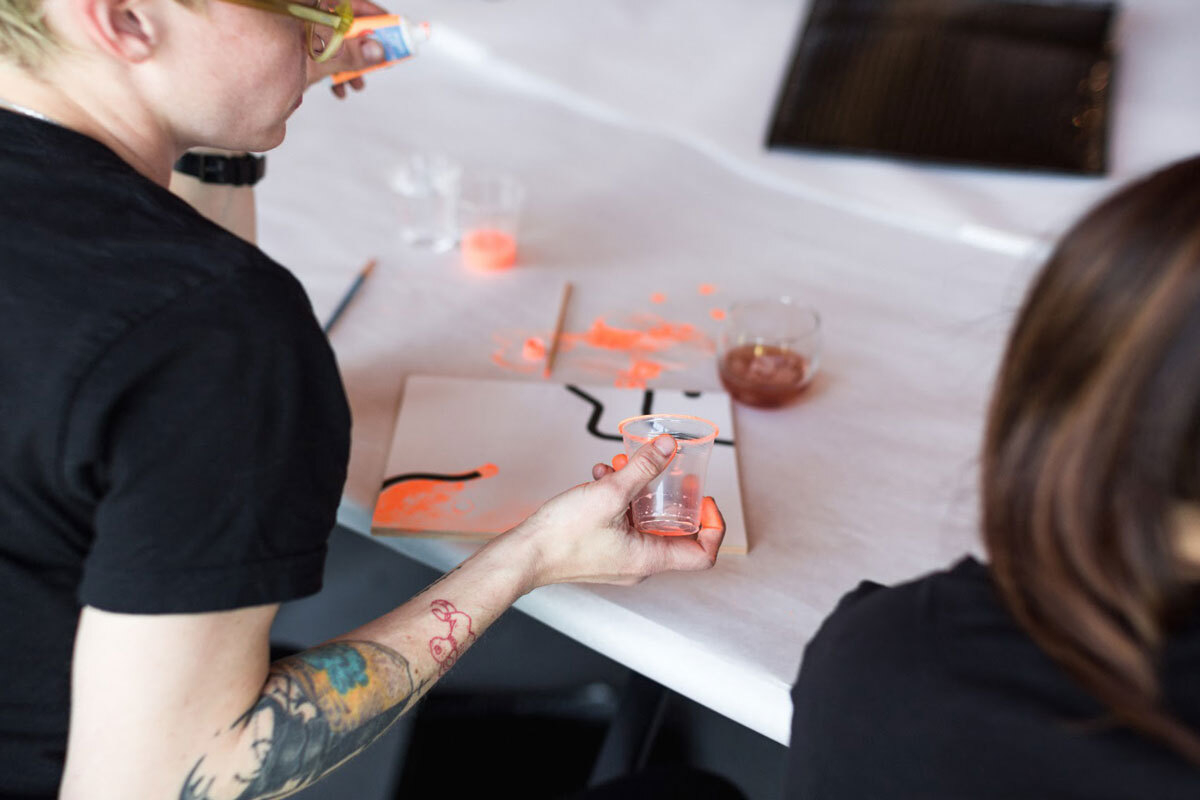
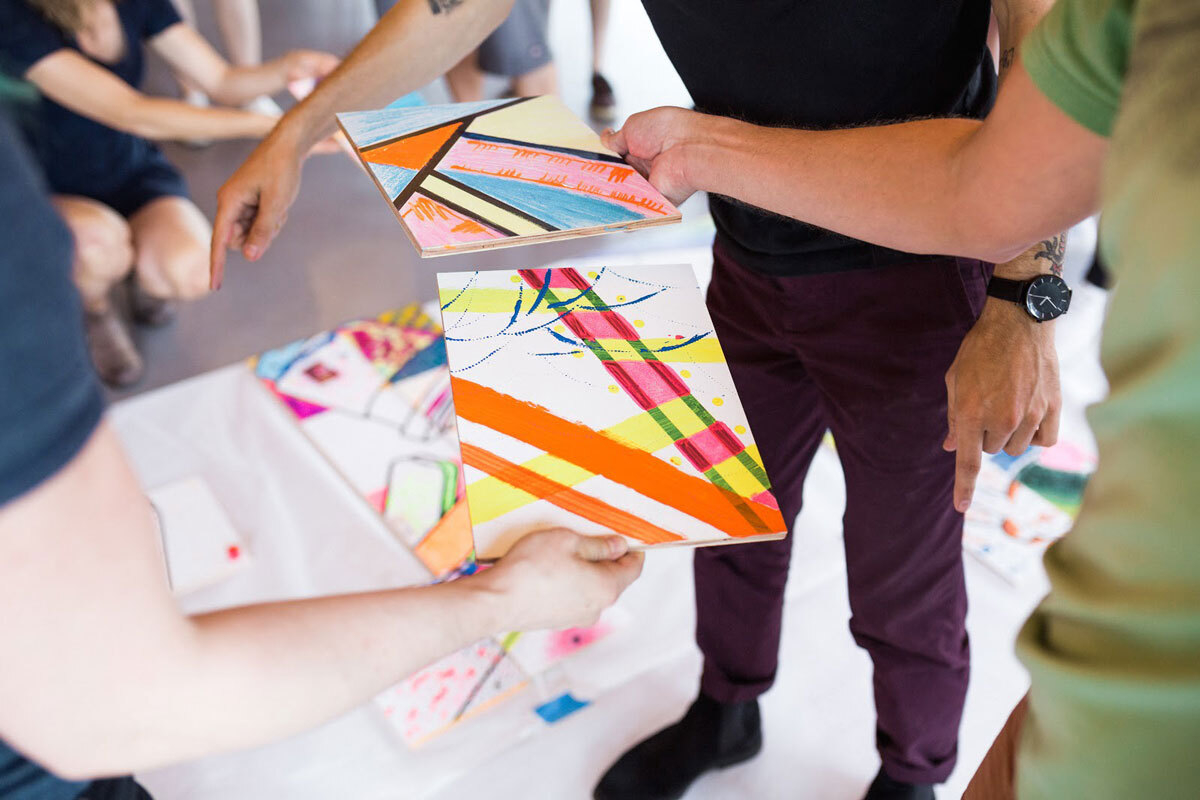
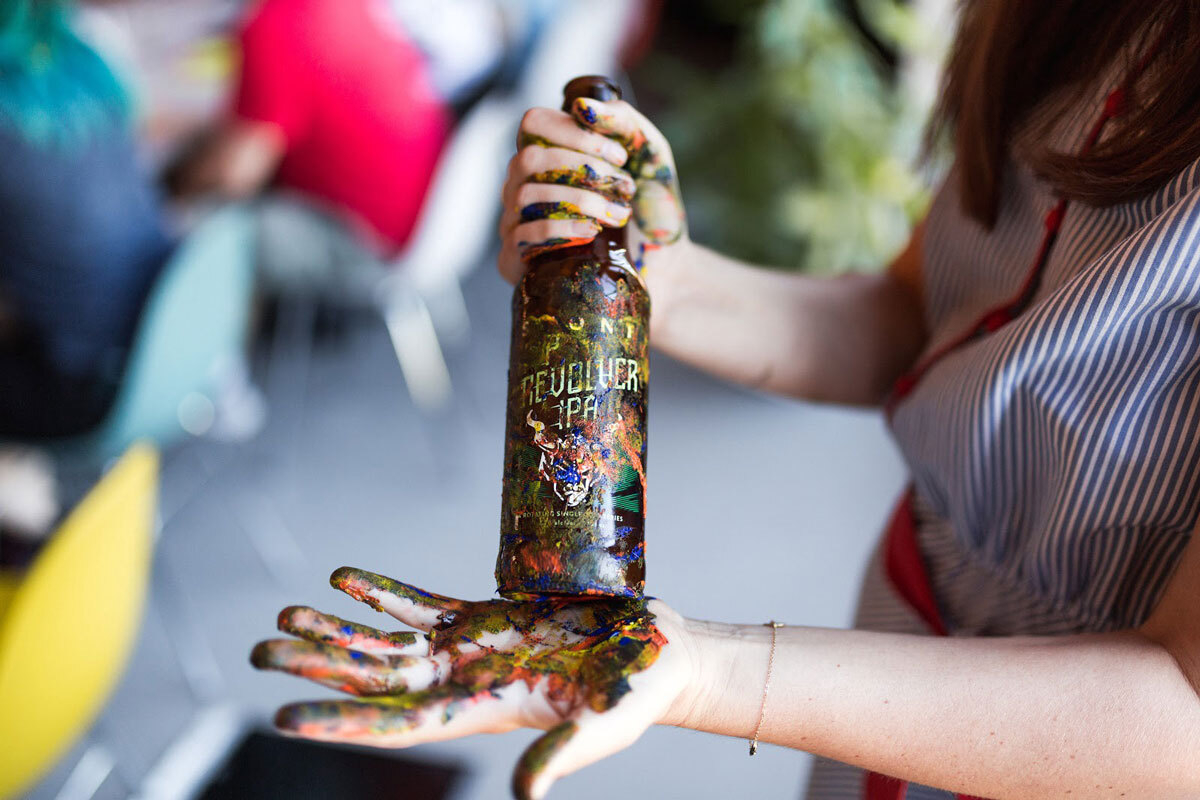
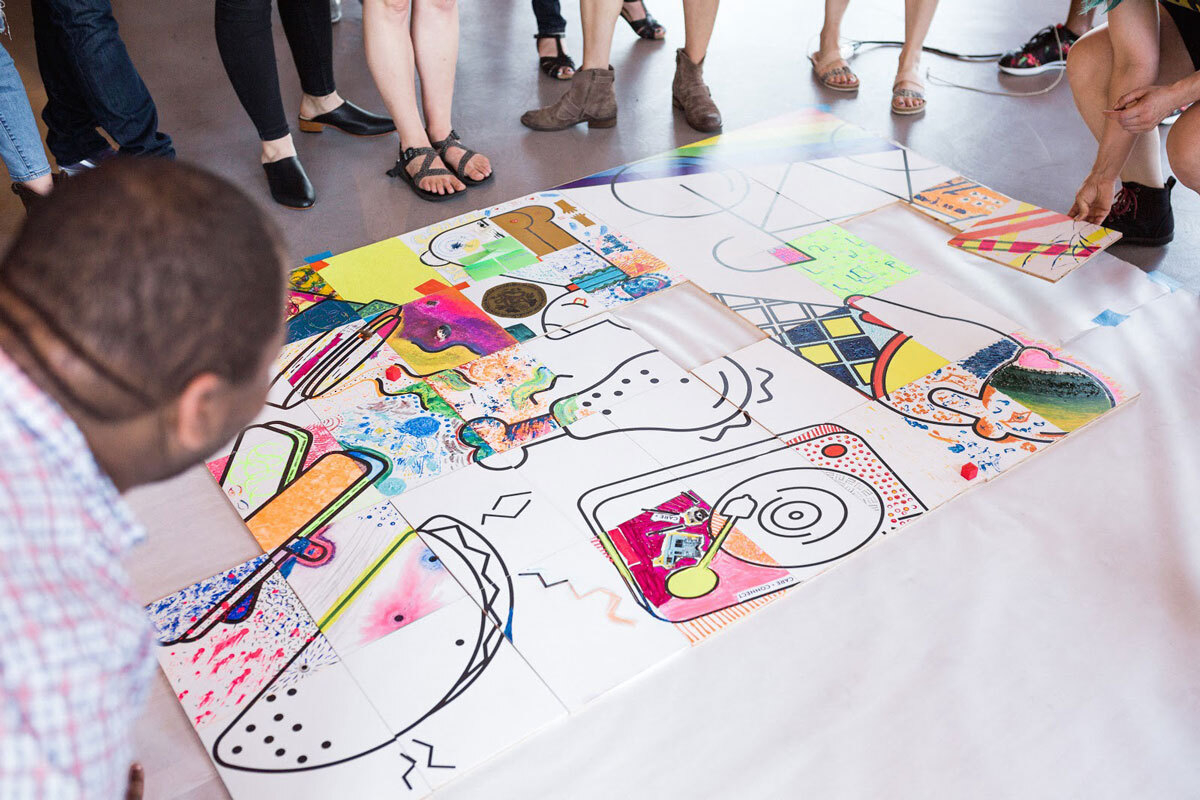
And perhaps most importantly, we were reminded that creativity is becoming an essential skill in an increasingly digital landscape. Creativity is self-expression. Creativity reminds us there are multitudes of ways of seeing the world. Creativity values diversity. Creativity breeds empathy.
Duffy expressed this well when told us, ‘I feel great about creativity in the future. I firmly believe that creativity is something that is uniquely human. As automation becomes more prevalent, creativity will become the skill of the future.’
Speaking of the future — our canvases are now back at Electric Coffin’s studio receiving the EC finishing treatment. Stay tuned for the grand reveal of our piece!


